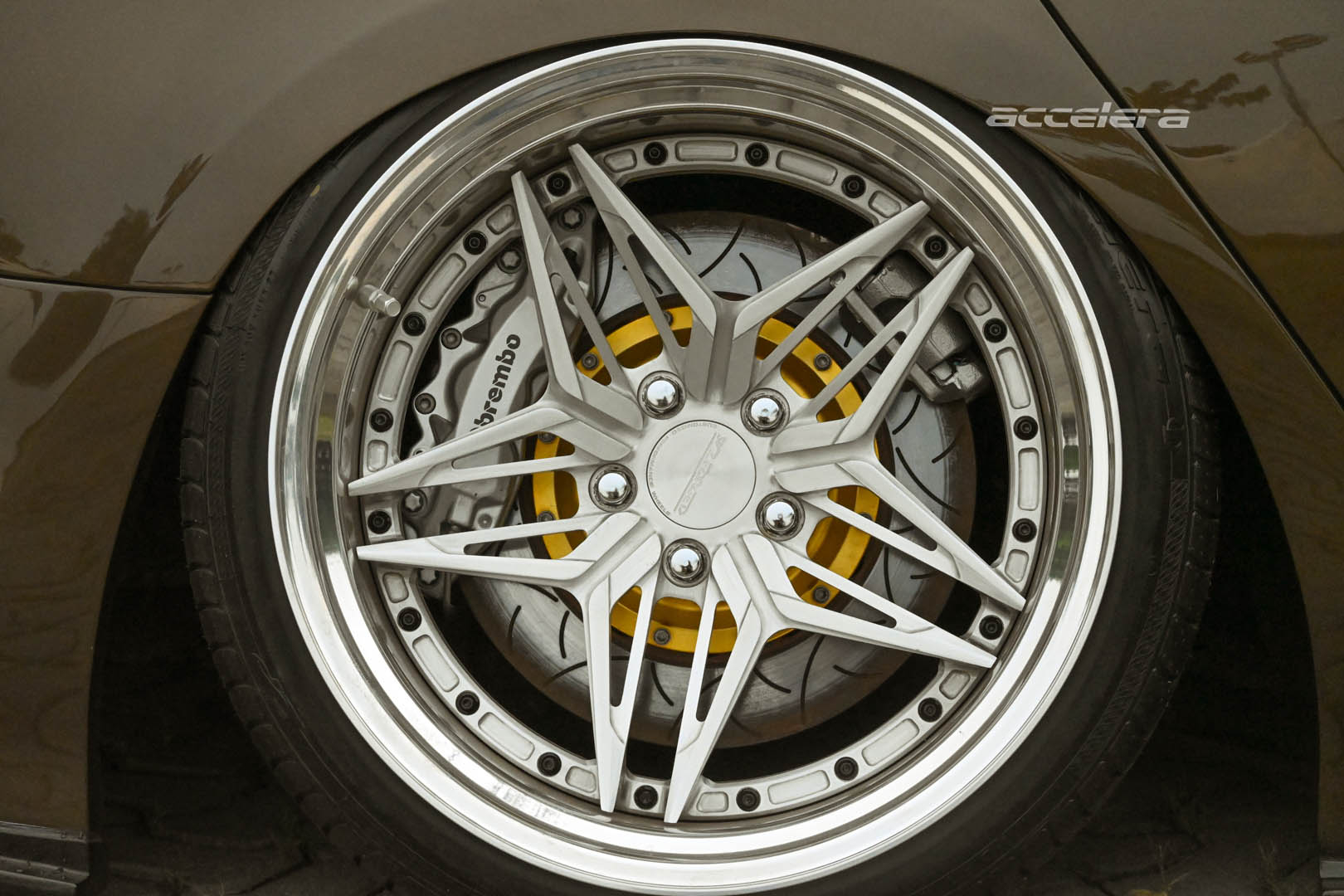The Difference Between Electric Car Tires and Conventional Tires
The popularity of electric cars has continued to rise in recent years. This is not only because of trends, but also because of public awareness of more environmentally friendly vehicles. But when talking about electric cars, don't just focus on the battery or electric motor, there is one component that is often overlooked but is actually very crucial: tires.
Yes, electric car tires have different characteristics compared to conventional car tires. At first glance, they may seem similar, but the differences in material, design, and function are quite significant. Let's discuss them one by one.
Composition & Design: Efficiency is Key
In general, electric car tires and conventional tires are made from similar materials, but their development directions are different. Electric car tires rely on the Low Rolling Resistance (LRR) type. This means less friction with the road surface, allowing the vehicle to move more efficiently and conserve energy.
Meanwhile, conventional tires do not prioritize energy efficiency. Their designs are more diverse, depending on performance requirements, driving style, and vehicle type, ranging from sedans, SUVs, to trucks.
In terms of materials, electric vehicle tires are typically lighter and made with advanced technology to reduce friction and extend their lifespan. Conventional tires still rely on rubber and fiber compounds that tend to be heavier and less efficient.
Size, Profile, and Adaptation to Batteries
The design of electric cars, which have large batteries under the body, means that the size and profile of the tires are also adjusted. They are usually slimmer and taller to accommodate the heavy load and maintain comfort.
Conventional car tires also vary, but their purpose is more about durability in various road conditions and driving styles.
Emissions: Which is Cleaner?
When it comes to emissions, electric car tires are clearly superior. Since the car's power source comes from electricity, exhaust emissions such as CO₂, NOx, and other harmful particles can be minimized.
Conversely, conventional car tires still contribute to emissions from the burning of fossil fuels.
Performance: Traction, Handling, and Durability
Electric car tires are generally equipped with technology that enhances traction, especially on slippery or wet roads. Their design is also optimized for more precise handling. Moreover, the position of the battery under the car lowers the center of gravity, which automatically increases stability.
In terms of durability, electric car tires are usually more durable. They are designed to support the extra weight of large batteries, while also being able to adapt to extreme weather conditions, such as a more efficient water drainage system to avoid aquaplaning. Some even feature automatic pressure adjustment technology, which adjusts air pressure according to temperature or road conditions.
Production & Maintenance: More Expensive Upfront, More Economical in the Long Run
In terms of production, electric car tires are indeed more expensive. The materials and technology are no joke, as they must be durable and efficient at the same time. But on the other hand, maintenance costs are actually lower.
These tires rarely need routine servicing of the suspension or brakes because the electric car system itself is smoother in its use of power.
Conclusion: Choose According to Your Needs
In essence, both electric vehicle tires and conventional tires have their own advantages. Electric tires excel in efficiency and environmental friendliness, while conventional tires remain a flexible choice for various road conditions and driving styles.
Indonesia 🇮🇩
Perbedaan Ban Mobil Listrik vs Konvensional
Popularitas mobil listrik terus menanjak dalam beberapa tahun terakhir. Bukan cuma karena tren, tapi juga karena kesadaran masyarakat terhadap kendaraan yang lebih ramah lingkungan. Tapi ngomongin mobil listrik, jangan cuma fokus ke baterai atau motor listriknya saja, ada satu komponen yang sering dilupakan padahal krusial banget: ban.
Yup, ban mobil listrik punya karakteristik berbeda dibanding ban mobil konvensional. Sekilas mirip, tapi ternyata perbedaan material, desain, dan fungsinya cukup signifikan. Yuk, kita bahas satu-satu.
Komposisi & Desain: Efisiensi Jadi Kunci
Secara umum, ban mobil listrik dan konvensional dibuat dari bahan serupa, tapi arah pengembangannya beda. Ban mobil listrik mengandalkan tipe Low Rolling Resistance (LRR). Artinya, gesekan dengan permukaan jalan lebih minim, sehingga mobil bisa melaju lebih efisien dan hemat energi.
Sementara ban mobil konvensional nggak fokus ke efisiensi energi. Desainnya lebih beragam, tergantung kebutuhan performa, gaya berkendara, dan jenis mobilnya, mulai dari sedan, SUV, hingga truk.
Dari sisi material, ban mobil listrik biasanya lebih ringan dan dibuat dengan teknologi tinggi untuk mengurangi gesekan dan memperpanjang usia pakai. Sedangkan ban konvensional masih mengandalkan campuran karet dan serat yang cenderung lebih berat dan kurang efisien.
Ukuran, Profil, dan Adaptasi Terhadap Baterai
Desain mobil listrik yang punya baterai besar di bawah bodi bikin ukuran dan profil bannya ikut disesuaikan. Biasanya lebih ramping dan tinggi untuk menyesuaikan beban berat serta menjaga kenyamanan.
Ban mobil konvensional juga bervariasi, tapi tujuannya lebih ke daya tahan di berbagai kondisi jalan dan gaya mengemudi.
Emisi: Siapa yang Lebih Bersih?
Kalau bicara soal emisi, ban mobil listrik jelas lebih unggul. Karena sumber tenaga mobilnya berasal dari listrik, emisi gas buang seperti CO₂, NOx, dan partikel berbahaya lainnya bisa ditekan seminimal mungkin.
Sebaliknya, ban mobil konvensional masih berkontribusi terhadap emisi akibat pembakaran bahan bakar fosil.
Performa: Traksi, Handling, dan Ketahanan
Ban mobil listrik umumnya dilengkapi teknologi yang memperkuat traksi, terutama di kondisi jalan licin atau basah. Desainnya juga dioptimalkan agar handling terasa lebih presisi. Apalagi, posisi baterai di bawah mobil bikin pusat gravitasi lebih rendah, yang otomatis meningkatkan stabilitas.
Soal durabilitas, ban mobil listrik biasanya lebih tahan lama. Desainnya dibuat untuk menopang bobot ekstra dari baterai besar, sekaligus punya kemampuan adaptasi terhadap cuaca ekstrem, seperti sistem alur air yang lebih efisien untuk menghindari aquaplaning. Bahkan beberapa dilengkapi teknologi penyesuaian tekanan otomatis, yang menyesuaikan tekanan udara sesuai suhu atau kondisi jalan.
Produksi & Perawatan: Lebih Mahal di Depan, Hemat di Belakang
Dari sisi produksi, ban mobil listrik memang lebih mahal. Material dan teknologinya nggak main-main, karena harus tahan lama dan efisien sekaligus. Tapi di sisi lain, biaya perawatannya justru lebih rendah.
Ban ini jarang butuh servis rutin pada bagian suspensi atau pengereman karena sistem mobil listrik sendiri lebih “smooth” dalam penggunaan tenaga.
Kesimpulan: Pilih Sesuai Kebutuhan
Intinya, baik ban mobil listrik maupun konvensional punya keunggulan masing-masing. Ban listrik unggul di efisiensi dan ramah lingkungan, sedangkan ban konvensional tetap jadi pilihan fleksibel untuk berbagai kondisi jalan dan gaya berkendara.






